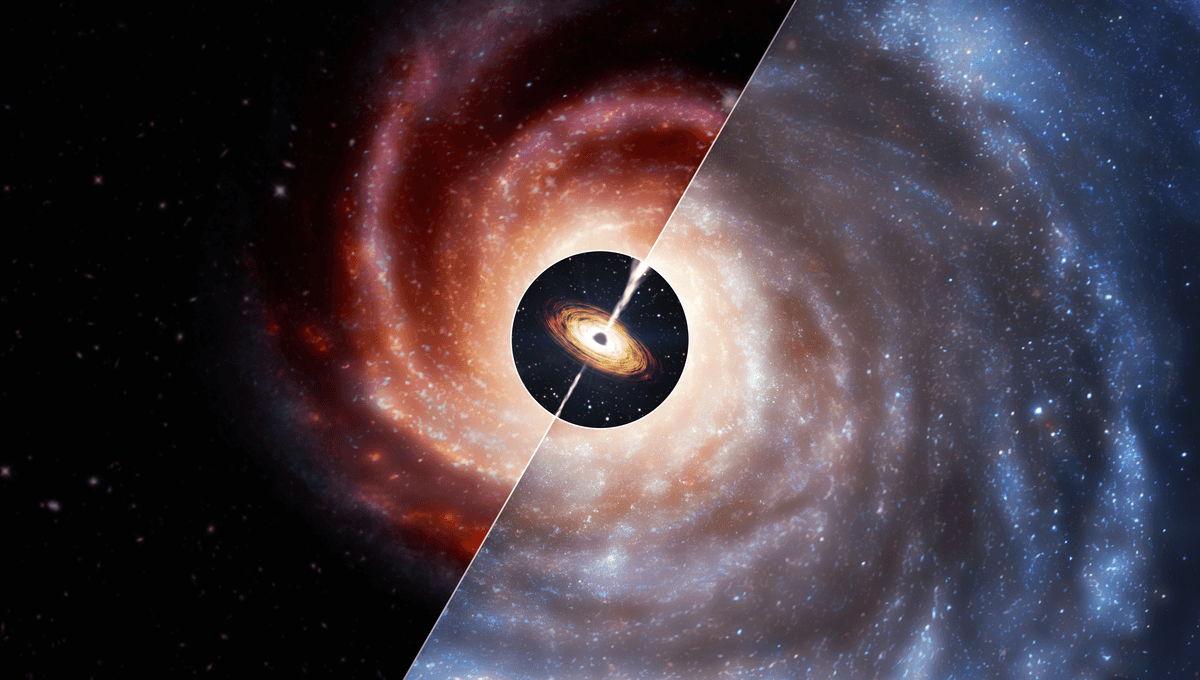
Astronomers have discovered what they have dubbed “overmassive” black holes, supermassive black holes that appear to violate the well-established relationship between the stellar mass of a host galaxy and the mass of its central black hole. The black holes are too big and this excess is telling something profound about the origin of these objects.
Astronomers used the JWST to observe 21 extremely far-away systems. Their light comes to us from between 12 billion and 13.2 billion years ago. In the current universe, the proportion between a supermassive black hole (SMBH) and the star in its galaxy is 1 to 1,000. But in these systems, the proportion between the two masses gets to 1 to 100, 1 to 10, and even 1 to 1.
“In the nearby Universe, there is a well-known relation between the mass of the central supermassive black hole and the mass of stars of their host galaxies,” lead author Dr Fabio Pacucci of the Center For Astrophysics | Harvard & Smithsonian told IFLScience. “Typically, the black hole mass is about 0.1% of the mass of stars. This is not the case in the distant Universe.” “Overmassive” black holes is clearly an apt name.
JWST has pushed humans’ ability to see further into the early universe (also known as the high-z universe), and while we are yet to see the birth of one of these supermassive black holes, this new study provides more evidence of how these curious objects came to me.
The “light seed” scenario has them form from extremely massive stars, 100 to 1,000 times the mass of the Sun going supernova. The “heavy seed” scenario instead suggests that enormous clouds of gas from which those stars form also directly formed massive black holes weighing 10,000 to 100,000 times the mass of the Sun.
“Several studies (dating back many years) suggest that if the first black holes formed as heavy seeds, then at high-z, their mass should be similar to the stellar mass of their hosts. This seems to be what we are witnessing with JWST observations,” Dr Pacucci explained.
This is not the first evidence that the heavy seed scenario might be the most likely formation pathway. Previous observations combining JWST data and X-rays from NASA’s Chandra also favored this scenario over a light seed. The heavy seed would also affect the whole galaxy in a way that can better explain why these objects stay overmassive for a while.
“These overmassive galactic systems may have formed heavy seeds with a mass close to the mass of the stars of their hosts. Then, given the size of their central SMBH, they may have emitted so much energy as to stunt star formation for a while. This combination of reasons could explain why we are observing primarily overmassive black holes in the high-z universe with JWST, violating the local relation,” Dr Pacucci told IFLScience.
“With JWST, it will be possible to pinpoint how the first supermassive black holes formed by finding black holes that are farther and smaller than those found so far, and which our study predicts to be quite abundant,” co-author Roberto Maiolino, a professor at the University of Cambridge said in a statement.
The study is published in The Astrophysical Journal Letters and was presented at the 243rd meeting of the American Astronomical Society.
Source Link: "Overmassive" Black Holes – Too Big For Their Own Galaxies – Discovered In The Early Universe